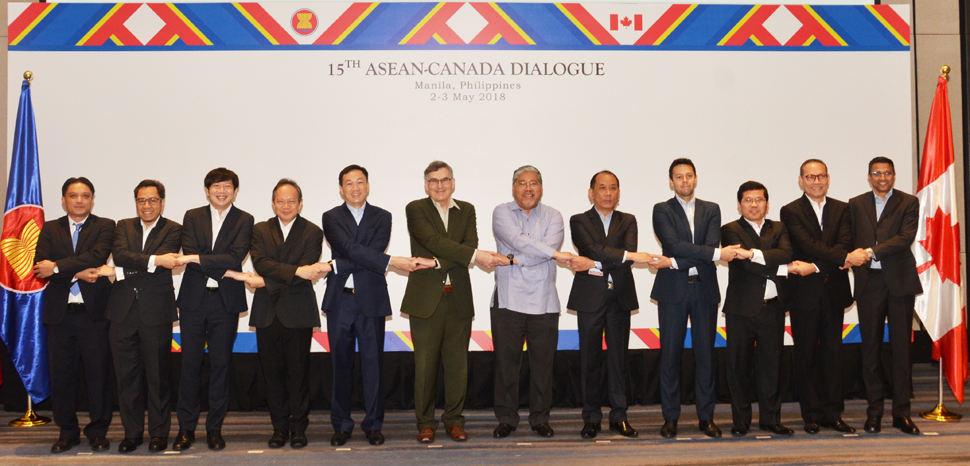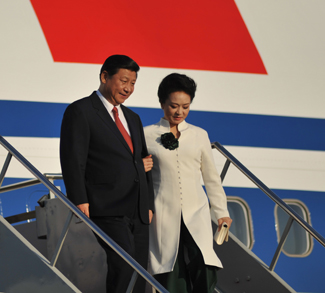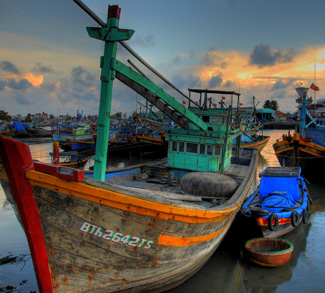In the middle of April 2021, it was announced by Google that the first subsea cable, known as the TOPAZ cable, would connect Asia and Canada. The cable will likely be finished by 2023 and will travel from Vancouver to the Japanese cities of Mie and Ibaraki.
Within the above context, Canada has a critical interest in ensuring the Indo-Pacific region remains free, open, and inclusive. Key priorities include that the region remains stable, governed by rules and free from Machiavellian, might-is-right approaches to international relations.
These priorities have become more tangible with Russian’s invasion of Ukraine and China’s use of lawfare, grey zone operations, and divisionism in the case of ASEAN and the EU in order to achieve its core interests, which include: 1) state sovereignty; 2) national security; 3) territorial integrity; 4) national reunification; 5) political and social stability; and 6) sustainable economic and social development.
To achieve Canada’s national interests, Ottawa should expedite the formulation and announcement of its Indo-Pacific Strategy (IPS), a strategy that should reflect the principles of the region remaining free and open. This will serve Canada’s abiding national interest in maintaining a rules-based order, an order that prioritizes the adjudication of international affairs through international law and peaceful approaches to dispute settlement.
By not doing so, Canada risks becoming a marginalized rather than a pivotal middle power in the Indo-Pacific region, as it will not be part of the rules-making process for the region nor defending it through diplomacy, international cooperation, and contributing to the region through the promotion of trade, inclusive development, and standard-setting.
Notably, this rules-based order is not fixed. It is an evolving order based on dialogue, compromise, and the need to develop new rules to govern emerging areas such as AI, the digital economy, cyberspace, etc. At the same time, this order strives to preserve the rules that limit the capacity of states to use military or other leverage to dominate other countries, as we have seen with Russia’s invasion of Ukraine.
Does Canada have a place in the Indo-Pacific?
To begin with, Canada is a member of the East Asian Summit (EAS). Canada could not have become a member of the EAS, which is held back-to-back with the year-end ASEAN Related Summit, had it not been a signatory to the Treaty of Amity and Cooperation (TAC) first.
Acceding to the TAC is imperative to becoming a Dialogue Partner of ASEAN. The UK signed on to it last year in order to break the moratorium imposed by ASEAN since 1999.
The moratorium started in 1999, during the tenure of the late Rudolfo Severino, the Secretary General of ASEAN, due to an increasing number of countries wanting to become a Dialogue Partner. The first Dialogue Partner of ASEAN was Australia in 1974.
Back then, there was nothing particularly special about the designation; however, it gave Australia a voice in ASEAN on events in Indo-China, where Australia successfully worked with Indonesia to put an end to the Vietnamese invasion of Cambodia in 1975.
When the invasion was ended in 1990, it paved the way for the creation of the UN Transitional Authority of Cambodia (UNTAC) to allow various factions to have an election. UNTAC was led by the late Akashi Yasushi, who went on to be the head of International Atomic Energy Agency (IAEA).
Canada has for decades been a Dialogue Partner of ASEAN. Despite this partnership, Canada’s influence has remained marginal. Its diplomacy has been underrepresented, trade steady though comparatively an under-performer, and “while Ottawa has moved to build a web of ties, Washington, Canberra, and Wellington have moved more quickly to redefine their relationships with this dynamic part of the world, including ASEAN. The United States has ‘rebalanced,’ Australia has embraced the ‘Asian Century,’ and New Zealand has a strategy for ‘ASEAN Partnership: One Pathway to Ten Nations.’”
The end result has been countries such as Australia becoming Comprehensive Strategic Partners of ASEAN in 2021, due to their longer history and deeper involvement.
Since China wanted to commemorate its 30th anniversary with ASEAN, a relationship marked by China becoming a Dialogue Partner of ASEAN in 1991, Beijing agreed to become a Comprehensive Strategic Partner with the proviso insisted that it must accept the ASEAN Outlook on Indo-Pacific (AOIP).
While it may not seem like much, AOIP is inextricably linked to the TAC – a key founding document of the Association of Southeast Asian Nations since its historic Bali Summit I. The TAC isn’t so much a “treaty” as it is an aspirational norm: no signatories shall use force as an instrument of its foreign policy.
Be that as it may, the TAC was introduced as the first necessary condition to being in EAS, whose inaugural summit was held in Kuala Lumpur in December 2005.
The member states of ASEAN assumed, incorrectly as it turned out, that the TAC would be a high barrier to pre-empting Anglo-Saxon powers such as Australia, New Zealand, and the United States (US) from joining EAS, which was predominantly the domain of ASEAN, China, Japan, and South Korea.
Placing TAC as an “impediment” worked for a while. Then came 2011, when President Barack Obama and President Vladimir Putin both decided to sign the TAC anyway. With the stroke of a pen, they were a part of EAS.
This is why the whole debate about whether Putin should be at the G-7 meeting or not is not being examined strategically. Diplomatically, it is important to hold Russia accountable to TAC, even if it is a mere aspirational document, with hortatory rhetoric.
No one can win any outright war against a nuclear weapon state. If anything, it is all about scoring tactical points. A game akin to hitting the Gopher that kept popping up in the video game arcade.
Having Putin showing up in Bali, eyeball-to-eyeball to other leaders of G-7 is where, ideally, some kind of dialogue could set in, as Russia is literally a bull in a China shop. The whole world knows that Russia has “lost” the hearts and minds of their Pan-Slavic neighbor, all 44 million of them.
Thus, if half of life is about showing up, Prime Minister Pierre Trudeau of Canada must be at the EAS and G-20 Summit too, of which it is a member to both. Canada has to be there with an IPS that reflects Canadian national interests, a sustainable and long-term commitment to the region and a distinct brand that distinguishes itself from the U.S. otherwise it will be seen as a junior partner in the U.S.’s overly securitized Indo-Pacific strategy.
Thus, what is so strategically significant about a Canadian IPS that includes a free-and-open focus to articulating Canada’s vision for itself in the region?
Undoubtedly, strategic ambiguity is getting increasingly costly by the day. In meetings with regional Indo-Pacific stakeholders, it is not uncommon to hear diplomats and policy-oriented scholars scoff at Canada’s Indo-Pacific absence and muse about its middle power marginalization in the region.
That is if one’s IPS is left unsaid, unwritten, and unspecified at the ministerial or the highest level. As things stand, Canada appears to have muted its IPS completely.
Since Google has just announced that it will lay its first long sub-marine fiber optic internet cable from Japan to Canada, nor would this be the only Internet backbone in the Pacific in due course, Canada must stand ready to protect the structural integrity of this cable. The amount of data, traffic and connectivity, it goes without saying, would be priceless.
Yet, a revisionist power such as Russia, knowing that Canada is a strong ally to the Group of 7, would have no qualms about using its cable cutting submarine, potentially, unmanned under water drones, to snap the cable into two, whether during or after its completion.
The issue is not ‘why,’ but ‘why not?’ In a world of great power rivalry, any losses incurred by the other is to one’s immediate gains.
If Canada believes deeply in renouncing force as an instrument of foreign policy, then having an IPS based on support for a free-and-open region is far more compelling than not having anything at all.
Just as importantly, the ex-Foreign Minister of Indonesia Marty Natalegawa had once proposed an Indo-Pacific Treaty in 2013, which would be modelled on the TAC.
While wars cannot be banned, as the Briand Kellogg Act of 1921, which remains legally active has amply shown, a treaty such as the TAC or the Indo-Pacific TAC can clearly show who the aggressors are.
As a ‘middle power,’ Canada would have to work with a coalition that is anti-war and pro-peace too. Ideally, the above “treaties” would in due course lead to a legally enforceable Code of Conduct on the South China Sea.
Foreign Affairs Minister Mélanie Joly and Defence Minister Anita Anand received mandate letters from Prime Minister Trudeau in December 2021. These letters direct them to formulate a Canadian Indo-Pacific strategy.
Inculcating TAC in a Canadian Indo-Pacific strategy would distinguish Canada’s Indo-Pacific approach from its southern neighbor. It would also be a template that allows Canada to include other strategic priorities such as trade, the digital economy, inclusive development, energy security, climate change and support for a rules-based order.
This inclusive approach alienates no country but also clearly articulates Canada’s interest an Indo-Pacific strategy that is based on rules and non-confrontation.
The views expressed in this article belong to the authors alone and do not necessarily reflect those of Geopoliticalmonitor.com



![BANDAR SERI BEGAWAN, Brunei (July 1, 2013) U.S. Secretary of State John Kerry gives remarks during the U.S.-ASEAN Ministerial Meeting [State Department photo by William Ng/Public Domain] BANDAR SERI BEGAWAN, Brunei (July 1, 2013) U.S. Secretary of State John Kerry gives remarks during the U.S.-ASEAN Ministerial Meeting [State Department photo by William Ng/Public Domain]](https://www.geopoliticalmonitor.com/wp-content/uploads/2016/02/Secretary_Kerry_at_the_U.S.jpg)
